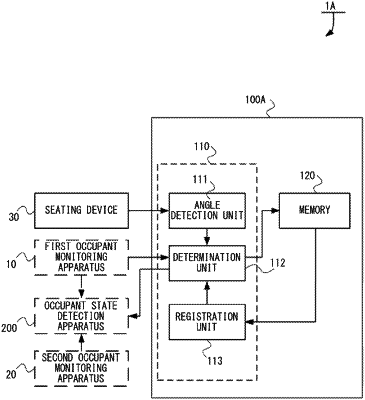| CPC G06V 20/597 (2022.01) [B60W 40/08 (2013.01); G06V 40/172 (2022.01); B60W 2040/0827 (2013.01); B60W 2040/0872 (2013.01); B60W 2420/403 (2013.01); B60W 2420/408 (2024.01); B60W 2540/043 (2020.02); B60W 2540/221 (2020.02); B60W 2540/223 (2020.02); B60W 2540/229 (2020.02)] | 3 Claims |

|
1. An occupant state detection system comprising:
a first monitor configured to monitor an occupant in a vehicle;
a second monitor configured to monitor the occupant in the vehicle in a different method from the first monitor;
one or more processors, and
one or more memories including one or more programs, when executed, causing the one or more processors to be configured to:
determine whether the vehicle is in a traveling state or a stopped state;
in response to determining that the vehicle is in the stopped state, specify first one of body parts of the occupant to be monitored by the first monitor and a first kind of information to be obtained from the first one of the body parts, and specify second one of the body parts of the occupant to be monitored by the second monitor and a second kind of information to be obtained from the second one of the body parts;
control the first monitor to monitor the first one of the body parts of the occupant to obtain first monitoring data from the first monitor, and the second monitor to monitor the second one of the body parts of the occupant to obtain second monitoring data from the second monitor; and
determine a physical state of the occupant based on the first kind of information from the first monitoring data and the second kind of information from the second monitoring data,
wherein the one or more processors is further configured to:
detect an angle of a seatback of a seating device provided in the vehicle and on which a driver is seated, the seating device being configured to freely change the angle of the seatback; and
determine that the vehicle is in the stopped state when the seatback is inclined at a predetermined angle or greater.
|